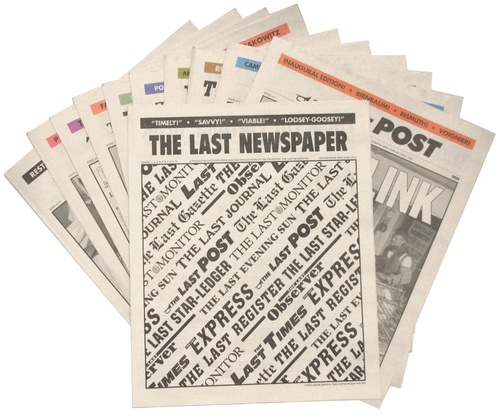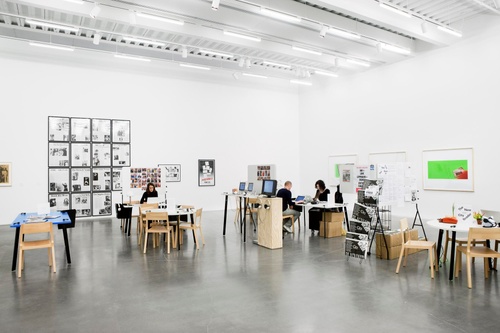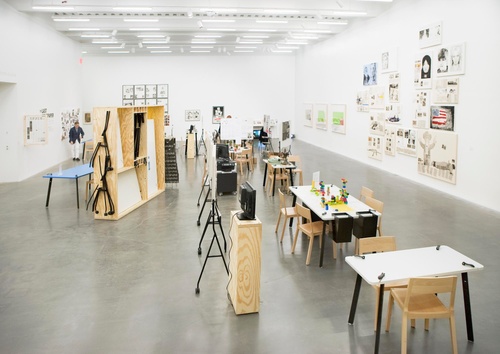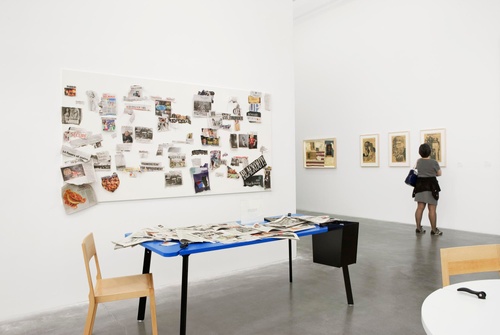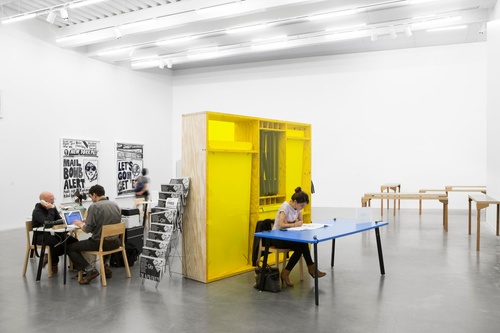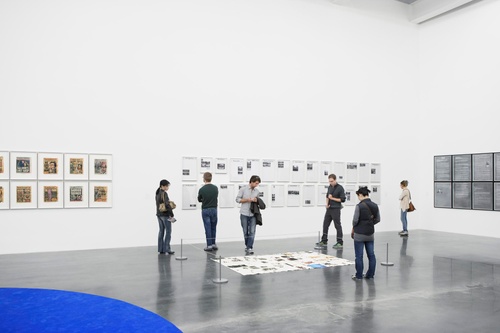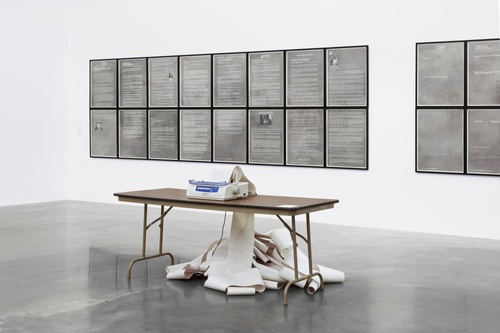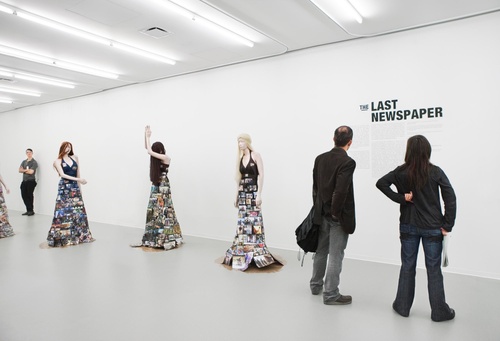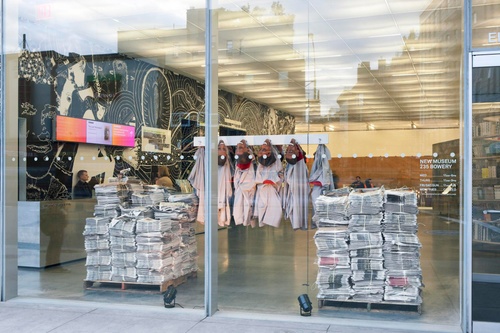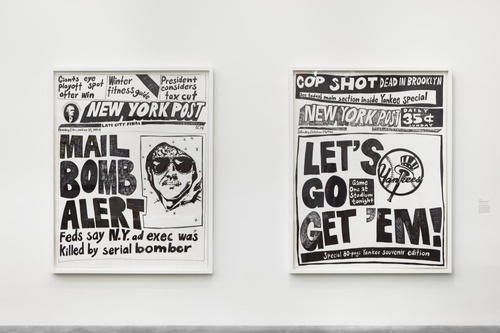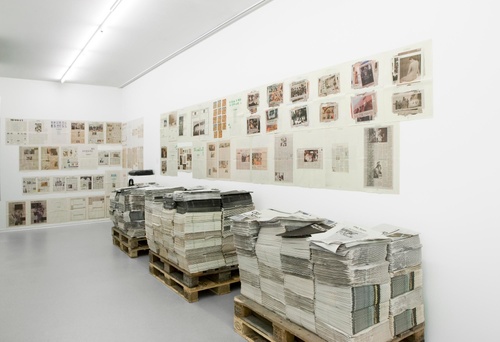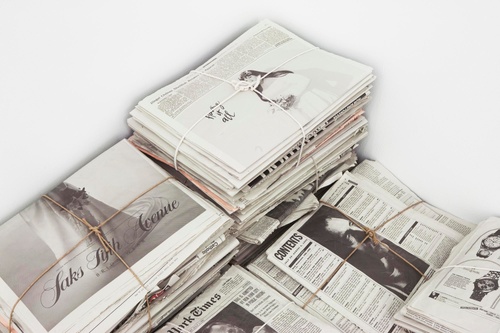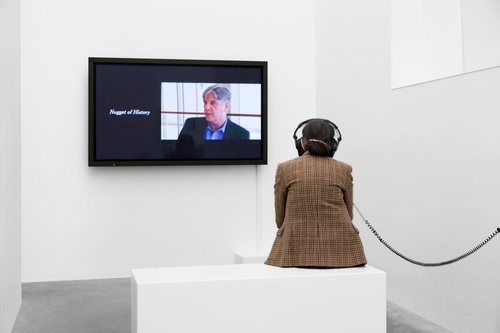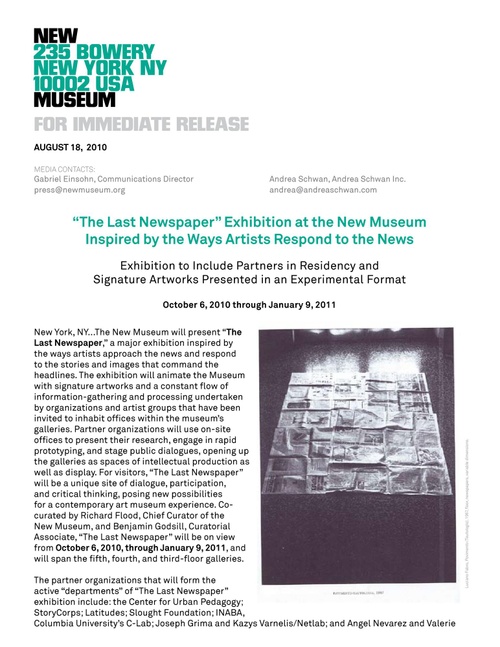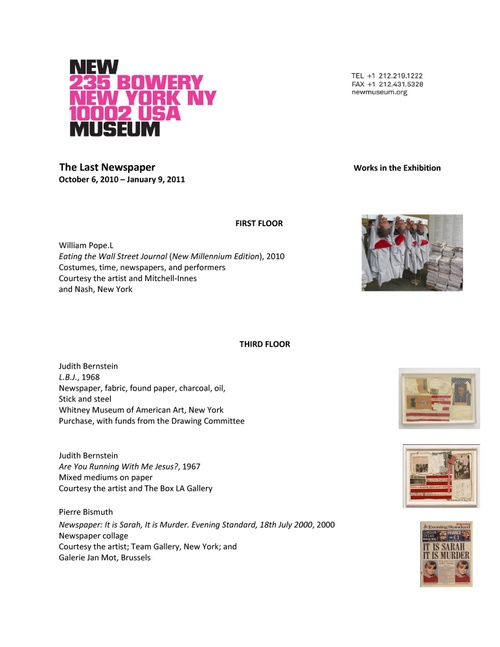The Last Newspaper: Contemporary Art, Curating Histories, Alternative Models
The Last Newspaper: Contemporary Art, Curating Histories, Alternative Models
At the turn of the twentieth century, in the dawn of the machine age, newspapers were everywhere and wire services were feeding their hunger for the latest information. In their rush to embrace the future, the Cubists discovered a rich artistic medium: the newspaper. The Surrealists followed suit, and by World War I newspapers had become an accepted material integrated with painting, collage, and graphic design. Throughout the 1950s, artists such as Robert Rauschenberg and Jasper Johns incorporated newspapers into their work not only for the iconic texture of the printed page, but also as a neural charge from the real world. By the 1960s—when this exhibition’s chronology begins—the use of the newspaper in fine art was no longer a novelty; it had become a standard source for both images and language.
The artists in this exhibition continue the exploration of the newspaper, but their focus lies in the ideological rather than the purely physical properties of the daily press. They use the newspaper as a platform to address issues of hierarchy, attribution, contextualization, and editorial bias. By disassembling and recontextualizing elements of the newspaper, such as the construction of graphics and text, the artists on view take charge of and remake the flow of information that defines our perception of the world. At its simplest, the artistic impulse that largely informs this exhibition is one of reaction and appropriation; the newspaper provides a stimulus and is itself incorporated into the final artwork.
In today’s culture, newspapers have to move as quickly as possible to compete with the increasing barrage of information on the internet. In print, it takes twenty-four hours to issue a correction. Online, credibility is rolled out in nanoseconds. People make and share the news in citizen-powered, peer-to-peer structures that can create and destroy consensus in hours. If artists were some of the first to begin to question the structure of the news, we have now reached an epoch where the public as a whole is empowered to police (and become) the press.
It is in this context that a selection of collectives and agencies has partnered in this exhibition. If the artwork assembled in the galleries is dedicated to deconstructing the power and possibilities of the press, then the invited participants are engaged in finding new (and perhaps more holistic) ways of describing the world. Four partners are in residence on the museum’s third floor inhabiting a set of flexible offices designed by Blu Dot. Latitudes, the Barcelona-based curatorial office, and a diverse team lead by Joseph Grima and Kazys Varnelis/Netlab, are on site producing weekly newspapers. The Center for Urban Pedagogy and StoryCorps are both prototyping new models for sharing and shaping discourse.
Beyond these four residencies, the exhibition is animated by the Philadelphia-based Slought Foundation with kiosks, a reading room, and a discussion area spread throughout the exhibition and dedicated to a reexamination of Emmanuel Kant’s essay “Perpetual Peace.” All the partners seek to wade through tides of information in order to find new ways of making the contemporary world more legible. Their activities are an example of citizen journalism, as well as forums for the examination and structuring of something aspiring to be truth.
“The Last Newspaper” is co-curated by Richard Flood and Benjamin Godsill.

